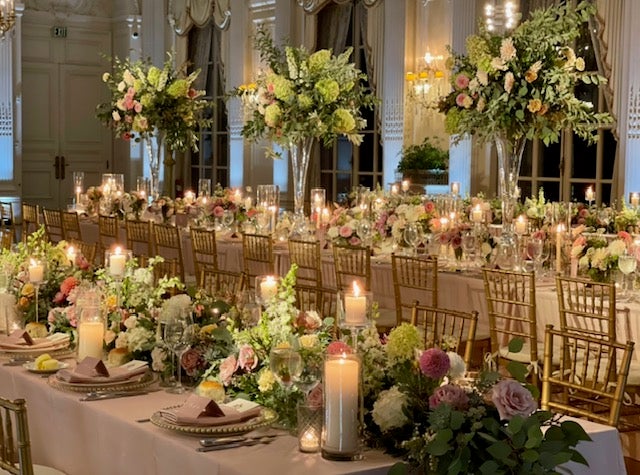
Local
“Nothing is guaranteed,” Paula Marrero of Marrero Events said. “You have to think outside the box.”

Paula Marrero has gotten quite used to maximizing her creativity these last few years.
When the COVID-19 pandemic shut the world down, the Boston-based wedding planner consoled her couples and helped them focus on Plan B. And then Plan C.
As the 2022 wedding season begins, Marrero is once again navigating a slew of challenges. This time, her headaches stem from supply chain shortages that are crippling every industry and wreaking havoc for many.
But, when you’re committed to hosting a large-scale event on a certain date and time, the panic hits a little harder when you can’t be sure you’ll have plates.
“We’re seeing it a lot with floral and decor,” Marrero said during a recent interview. She had just ended a brainstorming session with a bride who couldn’t get candles or containers to hold her centerpiece flowers.
The reality is that vendors just can’t be certain that something will arrive in time, Marrero said, and it’s causing everyone to be more open-minded and realistic.
“Nothing is guaranteed,” Marrero said. “You have to think outside the box.”
Beyond the supply questions, there are also concerns over the price of food. Vendors are afraid to charge the full cost of beef because couples wouldn’t want to pay it, Marrero said. The cost of the popular menu option has increased by about 70 percent.
“Beef is so high and everybody wants to offer beef,” she said.
When they hit a glitch, Marrero is there to encourage her couples to think creatively and find different resources.
She’s even purchased products from Alibaba and other sites to store in her office — from linens to charger plates — so she has some supplies on-hand.
But for those couples who have been delayed taking their walk down the aisle, their priorities are clearer and they willingly accept the backup plan.
“Some of them are just tired of waiting,” Marrero said.
Although couples may face some trouble decorating for their big day, for the most part, they aren’t stressing over what they’ll wear.
Bridal shops have quickly figured out over the last two years how to meet customer demand and stock enough inventory to make every wedding date.
Alexa Malagodi, an assistant manager at Cristina’s Bridal Shop in Andover, said communication with their vendors has been critical.
“The wedding industry has definitely stepped up the challenge,” she said. “Our various designers still have a very wide selection.”
The category that’s seen the most impact are the dresses for the mother of the bride and the mother of the groom, Malagodi said, as beading used on those gowns is shipped in from India, which has been hit hard with supply challenges.
The way to get around the challenges, she said, is to stay aware of what production looks like for their vendors and designers and the moves they are making.
At the nationwide chain David’s Bridal, the size and scope of their company has helped them avoid the same challenges others are facing, CEO Jim Marcum said. The company has its own supply chain for its 300 stores, through which their merchandise is designed and produced.
“We actually have several distribution center locations in the U.S. where hundreds of thousands of dresses are on hand,” he said.
Through the company’s “Guaranteed in Stock and Ready to Ship” program, brides can pick from the top styles and colors their bridal party dresses. As the stores have seen an uptick in customers coming through the doors with the return of large events, the company has added more merchandise to that program, Marcum said. A loyalty program launched in late 2020 continues to see success as well.
“I think David’s is very well-positioned,” Marcum said.
Newsletter Signup
Stay up to date on all the latest news from Boston.com




